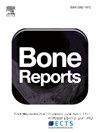Identifying the best reference gene for RT-qPCR analyses of the three-dimensional osteogenic differentiation of human induced pluripotent stem cells
IF 2.6
Q3 ENDOCRINOLOGY & METABOLISM
引用次数: 0
Abstract
Reverse transcription quantitative real-time polymerase chain reaction (RT-qPCR) is an essential tool for gene expression analysis; choosing appropriate reference genes for normalization is crucial to ensure data reliability. However, most studies on osteogenic differentiation have had limited success in identifying optimal reference genes. To the best of our knowledge, no optimal reference genes in three-dimensional (3D) osteogenic differentiation culture experiments using human induced pluripotent stem cells (hiPSCs) have been identified. In this study, we aimed to identify stable reference genes that could be used for normalization in gene expression analyses during the 3D osteogenic differentiation of hiPSCs using an atelocollagen sponge as a scaffold. Four algorithms—ΔCt, BestKeeper, NormFinder, and geNorm—were used to evaluate the stability of 14 candidate reference genes. Genes encoding TATA box-binding protein, hypoxanthine phosphoribosyltransferase 1, and 14–3-3 protein zeta polypeptide were identified as the most stable reference genes. In comparison, conventionally used reference genes (beta-2 microglobulin and beta-actin genes) ranked among those with low stability. We also demonstrated the successful 3D osteogenic differentiation of hiPSCs on atelocollagen sponge. Our findings provide valuable insights for reference gene selection and bone tissue regeneration from hiPSCs, which could improve the treatment prospects for bone defects and other similar conditions in regenerative medicine.
为人类诱导多能干细胞三维成骨分化的 RT-qPCR 分析确定最佳参考基因
反转录实时定量聚合酶链反应(RT-qPCR)是基因表达分析的重要工具;选择适当的参考基因进行归一化是确保数据可靠性的关键。然而,大多数成骨分化研究在确定最佳参考基因方面的成功率有限。据我们所知,在使用人类诱导多能干细胞(hiPSCs)进行的三维(3D)成骨分化培养实验中,尚未发现最佳参考基因。在这项研究中,我们的目的是找出稳定的参考基因,用于以阿特劳胶原海绵为支架的 hiPSCs 三维成骨分化过程中基因表达分析的归一化。四种算法--ΔCt、BestKeeper、NormFinder 和 geNorm--用于评估 14 个候选参考基因的稳定性。结果发现,编码 TATA 盒结合蛋白、次黄嘌呤磷酸核糖转移酶 1 和 14-3-3 蛋白 zeta 多肽的基因是最稳定的参考基因。相比之下,传统的参考基因(β-2微球蛋白和β-肌动蛋白基因)稳定性较低。我们还证明了 hiPSCs 在阿特劳胶原海绵上成功进行了三维成骨分化。我们的研究结果为参考基因的选择和 hiPSCs 的骨组织再生提供了宝贵的见解,可改善再生医学中骨缺损和其他类似病症的治疗前景。
本文章由计算机程序翻译,如有差异,请以英文原文为准。
求助全文
约1分钟内获得全文
求助全文
来源期刊

Bone Reports
Medicine-Orthopedics and Sports Medicine
CiteScore
4.30
自引率
4.00%
发文量
444
审稿时长
57 days
期刊介绍:
Bone Reports is an interdisciplinary forum for the rapid publication of Original Research Articles and Case Reports across basic, translational and clinical aspects of bone and mineral metabolism. The journal publishes papers that are scientifically sound, with the peer review process focused principally on verifying sound methodologies, and correct data analysis and interpretation. We welcome studies either replicating or failing to replicate a previous study, and null findings. We fulfil a critical and current need to enhance research by publishing reproducibility studies and null findings.
 求助内容:
求助内容: 应助结果提醒方式:
应助结果提醒方式:


